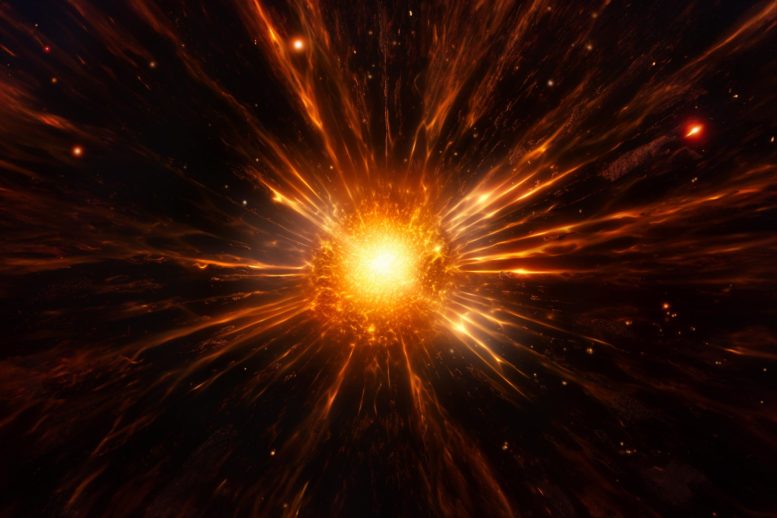
The Australian National University’s study on supernova SN 2012fr offers valuable insights into ‘standard candles’ used for cosmic distance measurements, revealing unique chemical layering. This research aids in understanding cosmic explosions and the pursuit of dark energy.
New data from supernova SN 2012fr has allowed scientists to better calibrate all Type Ia Supernova observations to measure distances in the Universe, using the ‘standard candle’ technique.
When observing the bright explosion of a White Dwarf star in our neighboring galaxy last year, researchers from The Australian National University collected the largest-ever data set on what they recognized as one of our best ‘standard candles’ yet for distance measurements in the Universe.
“We know how a candle of a particular brightness grows fainter as it is moved further away from us. So, if we know the true brightness of the candle (in this instance, supernova SN 2012fr) and we measure its observed brightness, we can then calculate the interceding distance,” said Dr. Michael Childress.
Supernova SN 2012fr left a chemical fingerprint that has been analyzed by a team of researchers led by Dr. Childress from the ANU Research School of Astronomy and Astrophysics and which also includes Nobel Laureate Professor Brian Schmidt.
Their data shows unprecedented, and quite unusual, layering in the material that was burnt and ejected in the explosion, especially silicon and iron.
Two distinct layers of silicon were found: one thick, outer layer that had faded by the time the supernova reached its peak brightness on November 12, 2012, (16 days after the initial explosion), and one deeper layer that hardly changed for several weeks after the explosion.
“As it turns out, SN 2012fr is not just another supernova but a really interesting case. Since it was discovered within a day of explosion, we were able to study it in greater detail than almost any supernova ever discovered,” Dr. Childress said.
SN 2012fr – An Enlightening Explosion
The chemical fingerprint of the nearby supernova SN 2012fr teaches us about the nature of these powerful explosions. Its well-studied host galaxy lets us better calibrate these supernovae as “standard candles” for measuring distances in the Universe.Video production: Swinburne Astronomy Productions; Narration: Dr. Michael Childress, The Australian National University
“Because we know the distance to its host galaxy (NGC 1365), this supernova actually lets us better calibrate all Type Ia Supernova observations to measure distances in the Universe, using what we call the ‘standard candle’ technique.
Despite its unusual layers, SN 2012fr appears to still be classified as a so-called ‘normal’ Type Ia Supernova – which Professor Schmidt used in his Nobel Prize winning work to discover dark energy – and it also presents a key link in our cosmic distance ladder.
“Our analyses of SN 2012fr will increase the precision of which we can measure distances outside of our own galaxy, as well as improve our understanding of these explosive events and our ability to use them in the hunt for dark energy, the source of the accelerated expansion of the Universe,” said Dr. Childress.
This research is part of ‘The Dark Universe’ theme of the ARC Center of Excellence for All-sky Astrophysics, CAASTRO and is published today in The Astrophysical Journal.
Reference: “Spectroscopic Observations of SN 2012fr: A Luminous Normal Type Ia Supernova with Early High Velocity Features and Late Velocity Plateau” by M. J. Childress, R. A. Scalzo, S. A. Sim, B. E. Tucker, F. Yuan, B. P. Schmidt, S. B. Cenko, J. M. Silverman, C. Contreras, E. Y. Hsiao, M. Phillips, N. Morrell, S. W. Jha, C. McCully, A. V. Filippenko, J. P. Anderson, S. Benetti, F. Bufano, T. de Jaeger, F. Forster, A. Gal-Yam, L. Le Guillou, K. Maguire, J. Maund, P. A. Mazzali, G. Pignata, S. Smartt, J. Spyromilio, M. Sullivan, F. Taddia, S. Valenti, D. D. R. Bayliss, M. Bessell, G. A. Blanc, D. J. Carson, K. I. Clubb, C. de Burgh-Day, T. D. Desjardins, J. J. Fang, O. D. Fox, E. L. Gates, I.-T. Ho, S. Keller, P. L. Kelly, C. Lidman, N. S. Loaring, J. R. Mould, M. Owers, S. Ozbilgen, L. Pei, T. Pickering, M. B. Pracy, J. A. Rich, B. E. Schaefer, N. Scott, M. Stritzinger, F. P. A. Vogt and G. Zhou, 21 May 2013, The Astrophysical Journal.
DOI: 10.1088/0004-637X/770/1/29

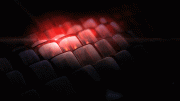
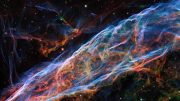

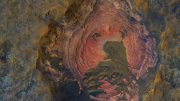



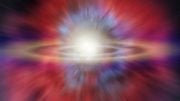
Can someone tell me what a “Comic Distance Ladder” is?
It is a mistake for a Cosmic Distance Ladder.
“Dark Energy” is hidden in plain sight, it is the Momentum Energy, cP=cmV. This is a “vector energy”, not taught in school, but is all over the Cosmos.
The vector derivative Del.cP = -cp/r cos(P) is the centrifugal force ala the “Cosmological Constant”. Take real physics for the answer and stop hunting for ghosts.
The candle distance is good data appropriately interpreted, the red shifted data should be distanced by the candle power and consider the red shifted position the result of gravitational refraction v/c = 1/refraction = 1/n, where v is the gravitational velocity field point of the “red shifted” object..